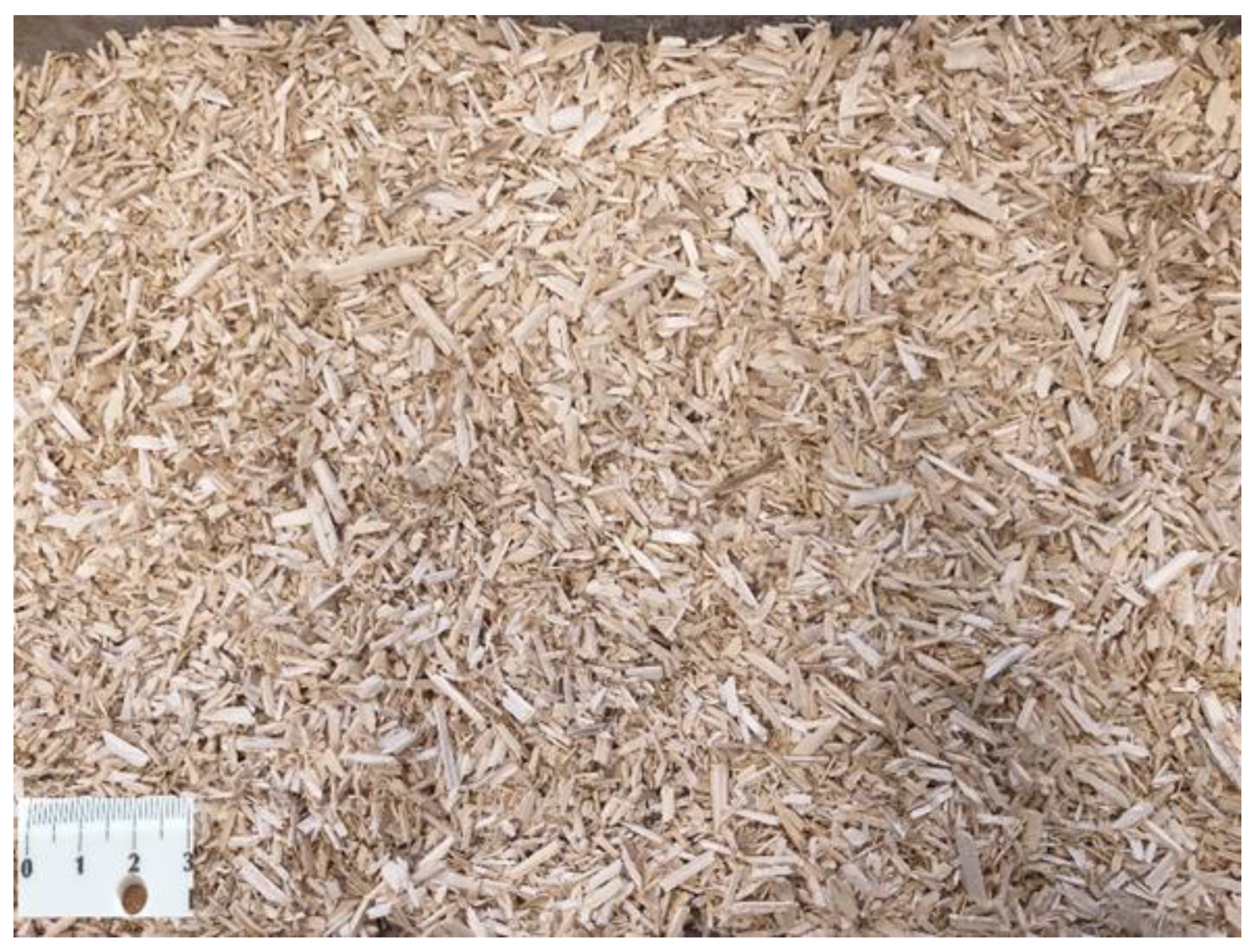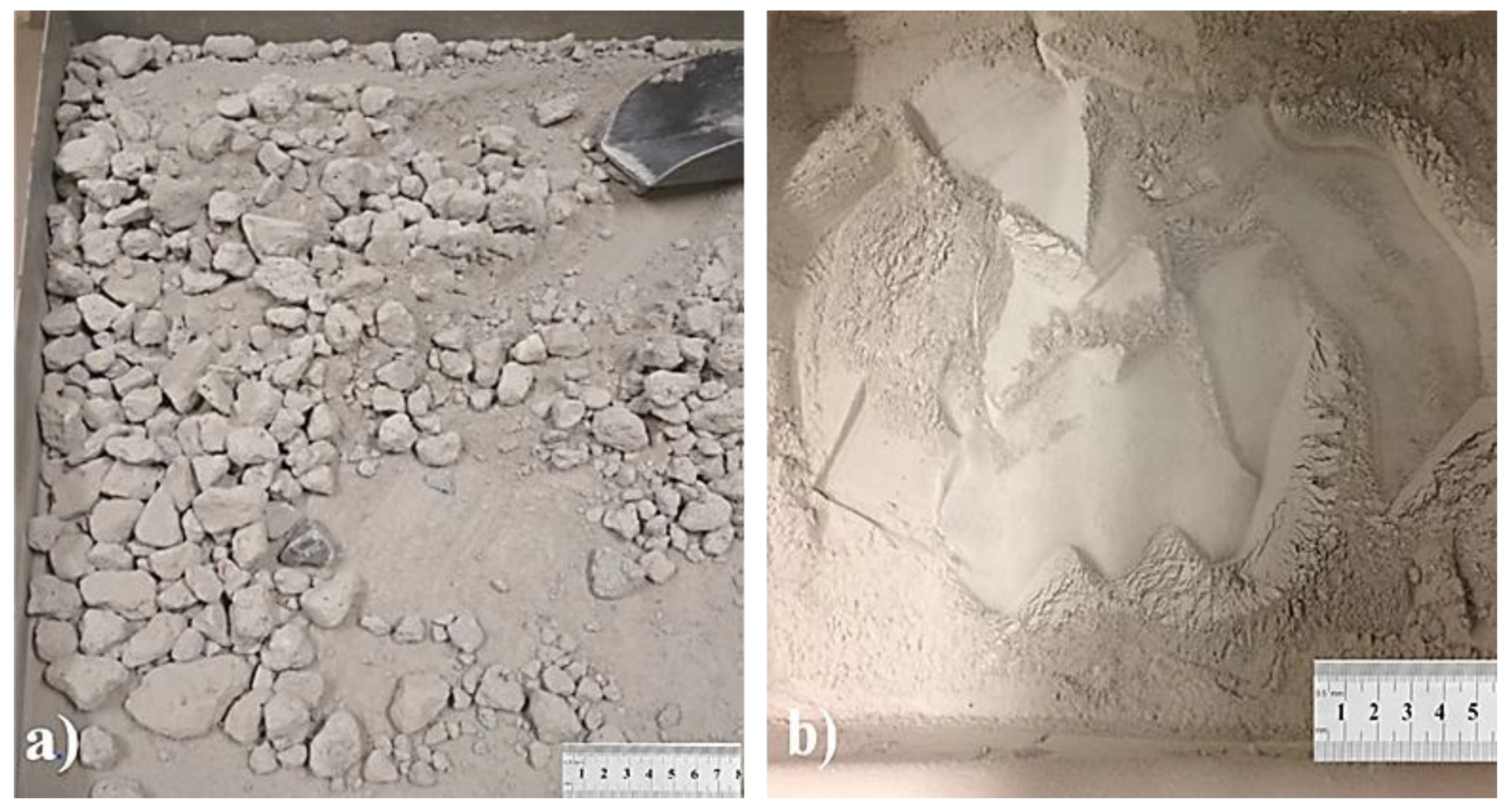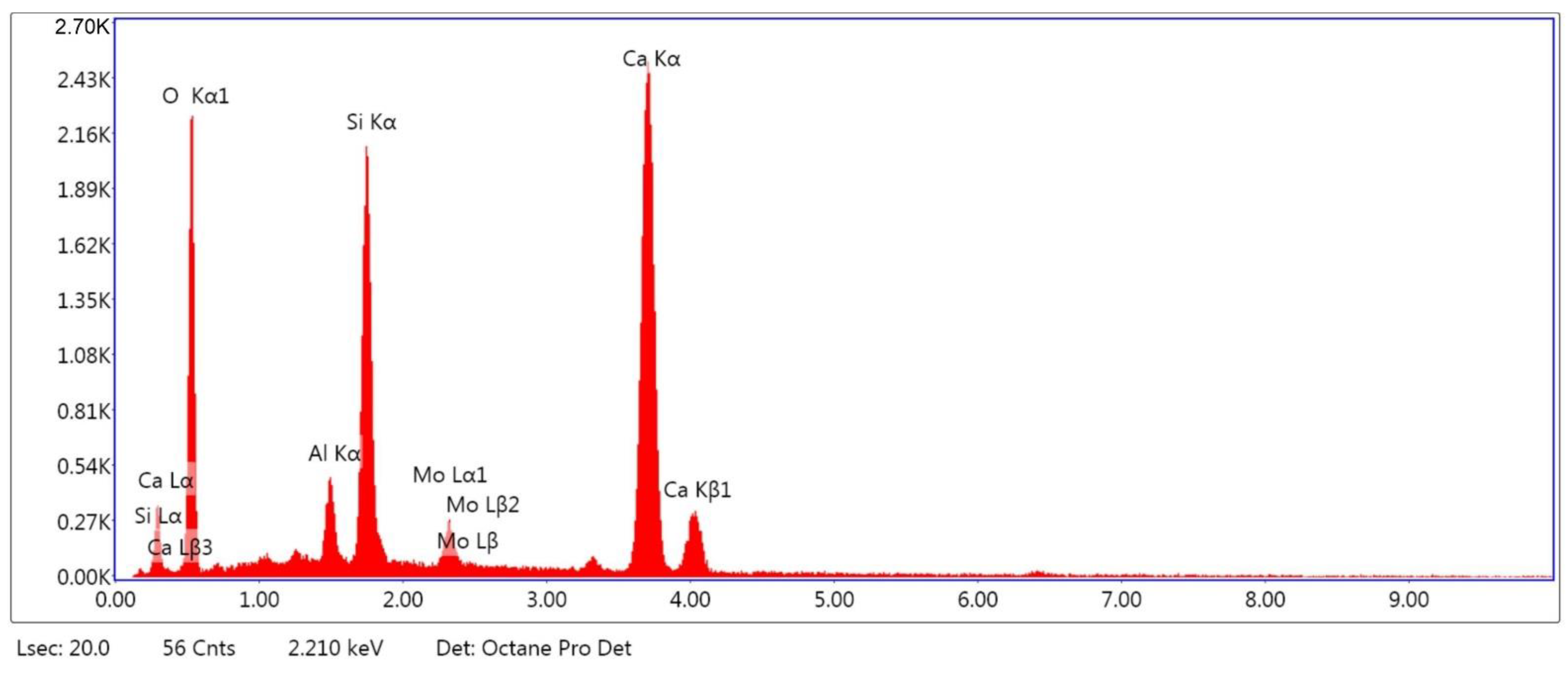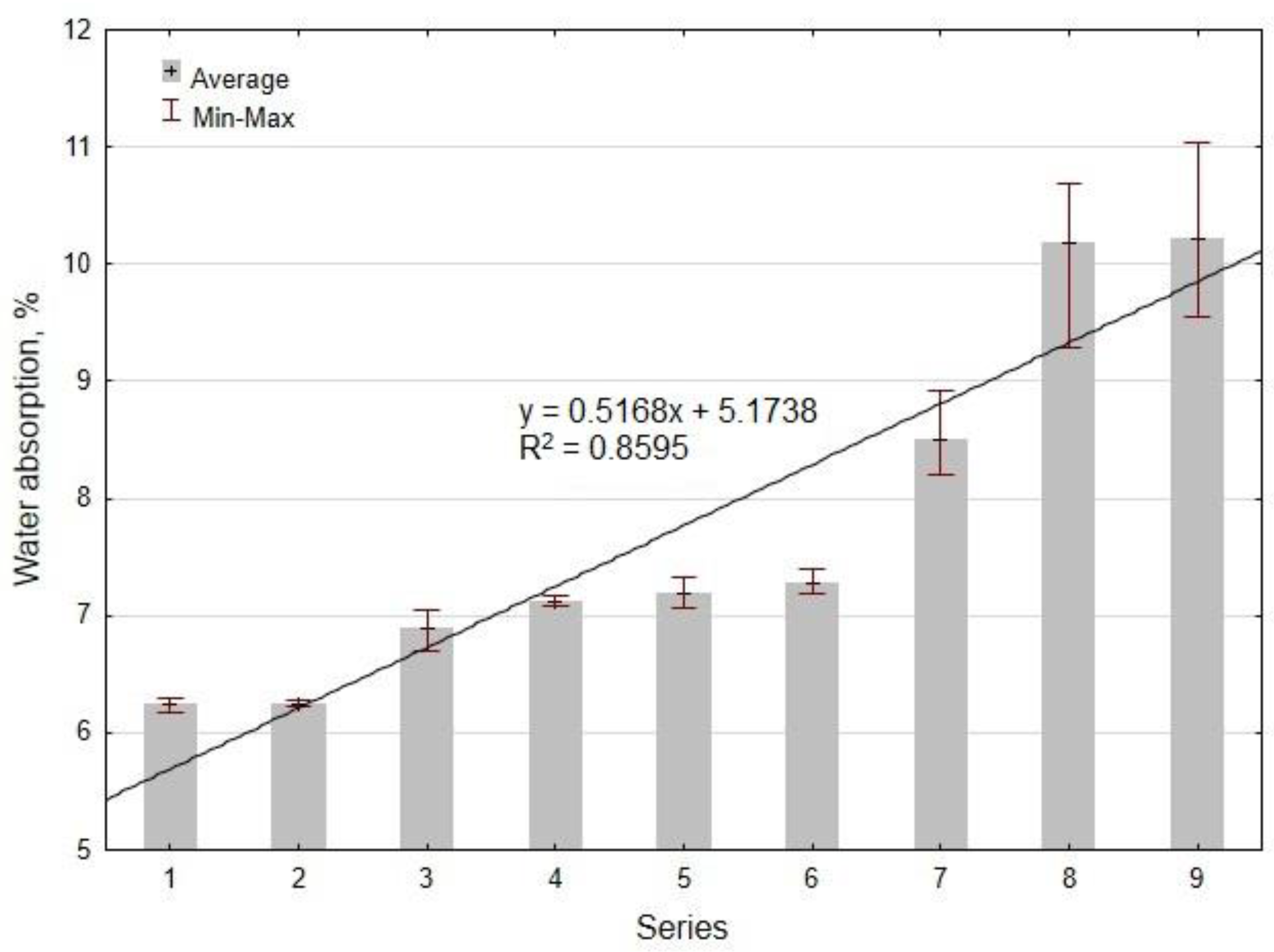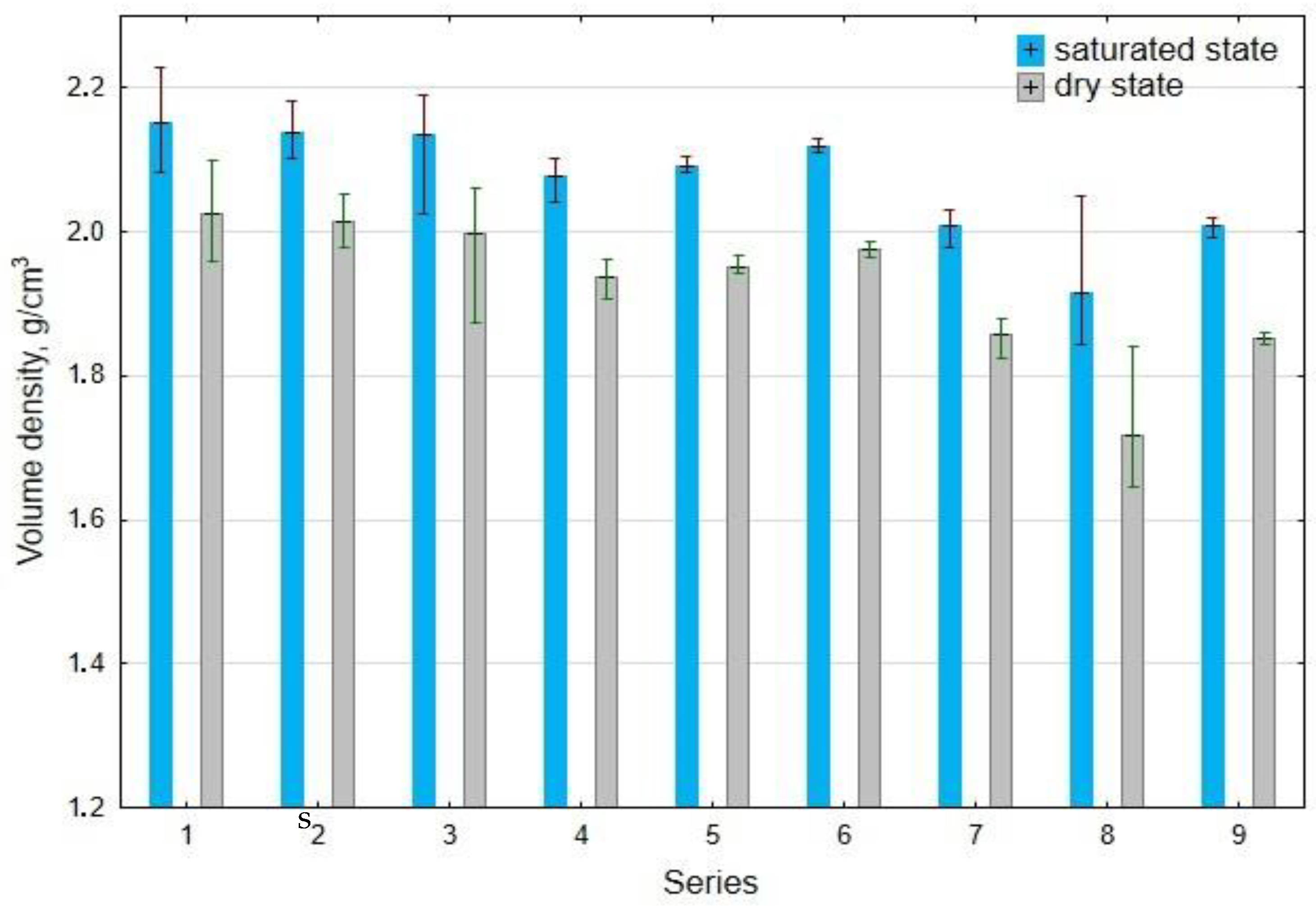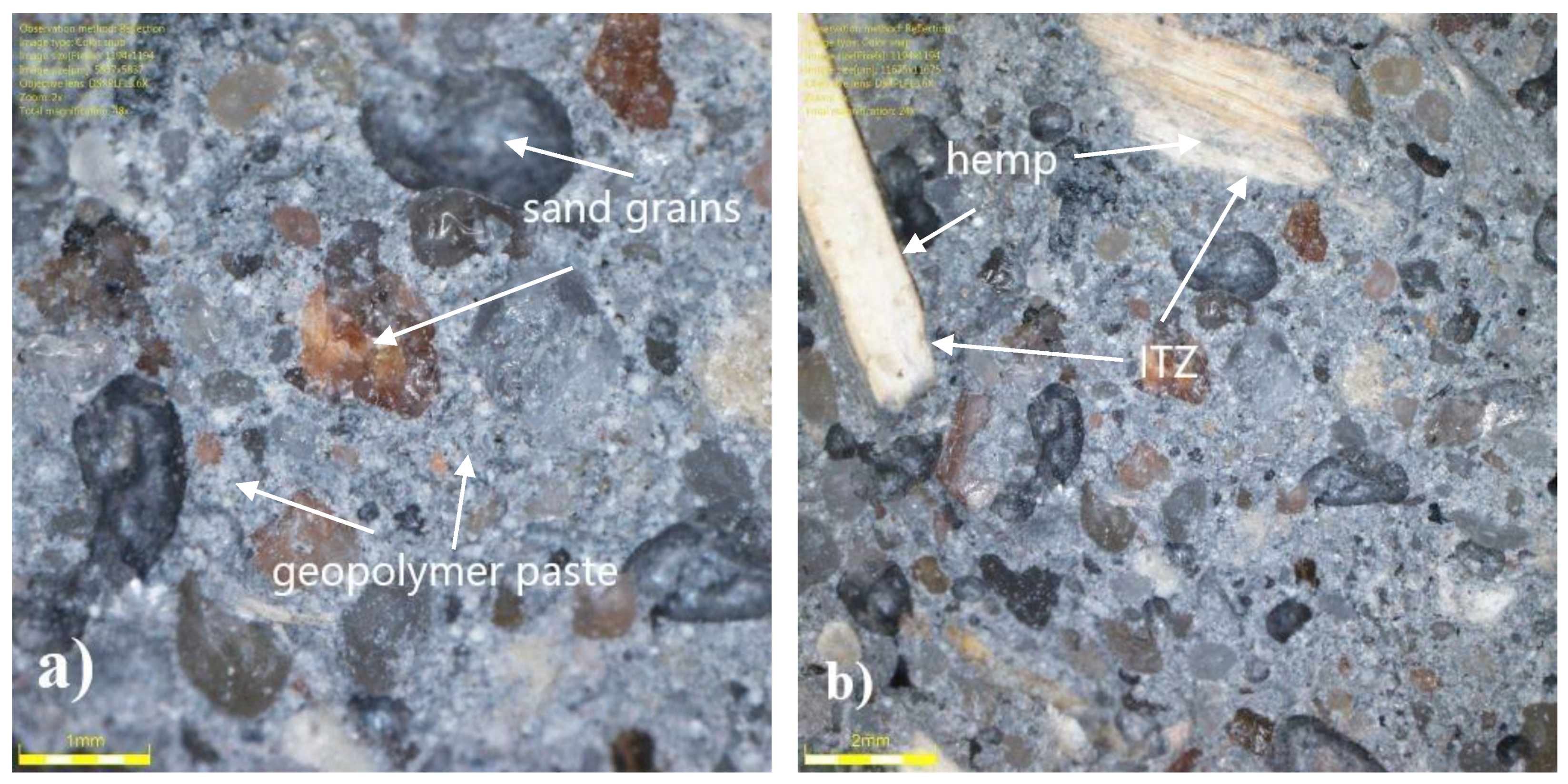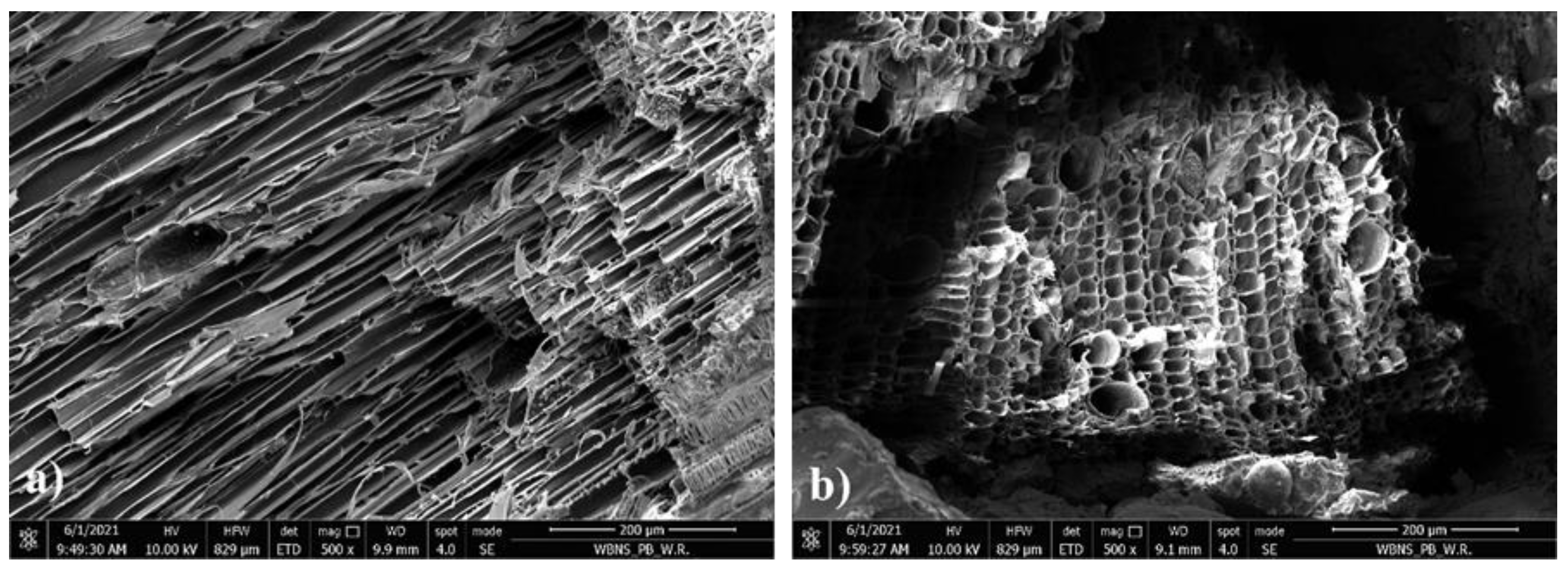1. Introduction
During the cement production process, large amounts of carbon dioxide are emitted. The cement industry alone accounts for approximately 4.1% of the EU’s and around 8 to 10% of world’s anthropogenic CO
2 emissions [
1]. Carbon dioxide in cement production is emitted in two primary ways: the calcination of calcium carbonate and fuel combustion in the cement kiln as well as in two indirect ways: electrical energy consumption for running the process equipment in the cement plant and for the transportation of raw materials and cement [
2,
3]. Over time, strategies to reduce the CO
2 emissions have been developed: improving production processes, modernizing equipment, replacing primary fuels with alternative fuels created from waste, optimizing the cement composition, and recovering heat energy from the production processes [
4]. However, almost half of the CO
2 is produced from the calcination process in the kiln where the conversion of raw materials takes place. It has been estimated that on average for cement plants around the world, CO
2 emissions from the calcination process amount to nearly 50%, while the emissions from fuel combustion amount to about 40% of total emissions [
3,
5]. Therefore, it is beneficial for the environment to replace part of the cement clinker with supplementary cementitious materials, such as blast furnace slag [
6], fly ash [
7], and natural pozzolan [
8], to significantly reduce the CO
2 emissions.
It is estimated that the synthesis of alkali-activated binders is a much less energy-consuming process than that of the production of Portland cement and produces 4–8 times less carbon dioxide [
9]. Regarding the terminology and difference between “geopolymers” and “alkali-activated binders”, Davidovits [
10] mentions that alkali-activated materials cannot be called geopolymers; however, in the literature, both the terms have been used interchangeably. Therefore, in this article both “geopolymers” and “alkali-activated mortars” have also been used interchangeably. One of the main drivers of geopolymer technology is the possibility of creating a real alternative to cement concrete [
10].
These materials can provide comparable performance to conventional concrete in a range of applications but with the added advantage of significantly reducing greenhouse (GHG) emissions [
11]. For this reason, geopolymer is also called “green concrete”.
Research on the use of geopolymer composites in construction has been conducted for many years [
12,
13,
14]. Sun et al. produced a geopolymer from the alkaline activation of ceramic waste using water glass and potassium hydroxide (KOH) as activators, and after 28 days, the specimens exhibited a compressive strength of 71 MPa [
15]. However, it was necessary to heat cure the material at a temperature of 60 °C. Reig et al. [
16] evaluated the influence of the alkaline activator concentration (NaOH and water glass) and the use of Ca(OH)
2 on mortars made from sanitary porcelain waste.
The produced specimens showed a compressive strength of 36 MPa when cured at 65 °C for up to 7 days. According to Zaharaki et al. [
17], the strength of alkali-activated specimens is affected by the molar concentration of the activating solution, i.e., NaOH. He deduced that the optimum NaOH molarity of around 10 M for the alkali activation of slag and C&D waste components.
However, at a high activator concentration, the workability of the geopolymer mixture is especially reduced in the presence of porous C&D waste. Allahverdi and Kani [
18] developed a cement using the waste from a brick production plant and waste concrete that was activated with NaOH in the proportion of 8% Na
2O content concerning the binder. Results obtained for 28-day compressive strength validated that waste brick was more suitable than waste concrete for geopolymerization. The maximum 28-day compressive strength achieved was 40 MPa for a system comprising only waste brick and containing 8% Na
2O by weight with respect to the dry binder. The strength increased with the increase in Na
2O percent. Research on geopolymer mortars containing NaOH/NaSi
2O
3 in the ratio of 2.5 was conducted by Abdullah et al. [
19]. This is a non-ecological solution due to the higher content of harmful sodium hydroxide; hence, its use in the geopolymer should be limited.
A less optimistic approach to the issues of geopolymer production was presented by Habert et al. [
20]. The authors agree that the production of such a binder has a slightly lower impact on global warming than conventional concrete, whilst having a higher environmental impact related to categories other than GHG gases. This is due to the energy consumption in the production of sodium silicate. Geopolymer concrete made from fly ash or granulated blast furnace slag requires less sodium silicate for activation than geopolymer concrete produced from pure metakaolin. However, when the production of fly ash and granulated blast furnace slag is taken into account during the life cycle assessment, it appears that geopolymer concrete has a similar impact on global warming as conventional concrete. As such, future research and development in the field of geopolymer concrete should focus on two potential solutions. First, the use of industrial waste that is not recyclable within other industries, and second, the production of geopolymer concrete should use a mix of blast furnace slag and activated clays. In addition, the production of geopolymer concrete should aim to minimize the amount of sodium silicate solution that is used. Furthermore, geopolymer composite production would gain from using waste material with a suitable Si/Al molar ratio in order to minimize the amount of sodium silicate solution used.
The aim of this research was to indicate that the geopolymer mortar produced from recycled fines and hemp has comparable properties to cement mortar and is a more ecological and environmentally friendly material. The second aspect was the possibility of managing, on the one hand, waste material in the form of a recycled fine fraction, and on the other, hemp as substitutes for natural sand in the mortar. The recycled fine is a by-product resulting from the production of high-quality recycled aggregate (according to the authors’ patented method [
21,
22]). As a result of the thermo-mechanical treatment of concrete rubble, up to 60% of the fine fraction (0–4 mm) is obtainable and can be used effectively with some additional care. Previously, the use of recycled fines in concrete was not recommended due to its unfavorable effects on the properties of fresh mix and the hardened composite [
23]. However, during the last decade, the use of fine recycled aggregate has become more important in concrete production because of economic implications related to the shortage of natural sands commonly used in concrete production.
However, in the presence of fine recycled aggregate, worse concrete properties or those that were comparable to the control were obtained [
24,
25,
26]. During the thermal-mechanical treatment of concrete rubble at the proposed temperature of 650 °C, all of the impurities present in the rubble are burnt, thermally activating the recycled fines, and the material partially regains its binding properties.
Hemp is one of the fastest growing plants on Earth and can be grown repeatedly. So far, hemp or chips have mainly been used for lightweight concretes as organic fillers to improve the insulation parameters of composites [
27,
28,
29]. In the presented research, a new use for hemp was found as a replacement for sand in alkaline-activated mortars. The use of granulated blast furnace slag eliminates the need to heat-cure the geopolymer mortar, which is usually necessary to stimulate the hardening process. This study may contribute to the reduction of the consumption of non-renewable natural raw materials such as sand and the management of waste such as recycled fines resulting from the processing of C&D waste. Such activities may contribute to the protection of the natural environment. According to the authors, this can be a positive contribution to the future of the construction industry.
